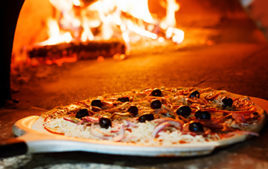Evolving menu trends are also having an impact on tabletop trends.
With so many different kinds of menus (formal, casual, bar/pub, etc.) now available within many clubhouses, having the appropriate plates, bowls, utensils, glasses and other service pieces in place for each type of dining space is critical. Evolving menu trends are also having an impact on tabletop trends.
Take small plates, for example. As downsized portions gain popularity, the dishes being used to serve them are also becoming smaller. The trend toward comfort foods is having a similar impact, with dishes that are rustic and more organically shaped.
What to buy?A leading manufacturer of tabletop products provides this punch list of questions for chefs, food-and-beverage managers and clubhouse managers to ask as they’re shopping for tabletop pieces:
|
Here are three of the most important factors to consider when shopping for tabletop wares that will suit all of a club’s changing and increasingly varied needs:
Members and guests eat with their eyes first. “Tabletop essentially becomes functional art,” says an executive with a leading manufacturer of tabletop products. “It must do the work of serving the food and beverages and, at the same time, showcase everything in ways that delight members and guests.”
Develop a menu with dishes in mind. As club chefs build menus and create new cocktails, flights or pairings, it’s important to consider which tabletop pieces will enhance the overall experience. Pieces should help to tell the story—not detract from it.
Keep in theme. Pieces should coincide with both the menu and the feel of the space where they’re being used. “Make sure that dinnerware, glassware, flatware and accessory pieces work together and complement the overall look, ambiance and experience you seek to create for members,” says the manufacturer’s executive.
Fortunately, today’s tabletops are highly integrated and most materials—metal, stoneware, porcelain, wood and glass—can be mixed and matched across a wide variety of applications. The best, most versatile and preferred plate is still the round white one, reports the manufacturer. And the current trend is to keep the traditional white pieces looking fresh by mixing and matching them with other shades of white, alternate materials and color accents.
However, this can be costly. “The number-one challenge when purchasing tabletop items is budget,” says the manufacturer’s executive.
The second challenge is how to phase out old tableware and ramp up to put the new items in service. Some clubs might choose to infuse the old with the new and create a “rolling” change. Others may opt for a full change-out all at once.
“It’s important to have a full transition plan in place, to keep things running smoothly,” the manufacturer’s executive says. Storage limitations, she adds, are also something to consider.
Once a commitment has been made, a club can get the most out of its tabletop selections by viewing them as an integrated part of the overall club experience—whether it’s representative of the entire club, or of a concept within the club.
“When making tabletop decisions, look far enough ahead to achieve the longevity needed for the investment, and to keep up with the culinary presentations of the industry,” says the manufacturer’s executive.
Finally, budget to invest frequently in accent pieces. These can freshen up the tabletop quickly, without replacing everything.





